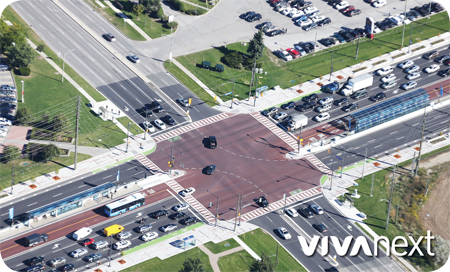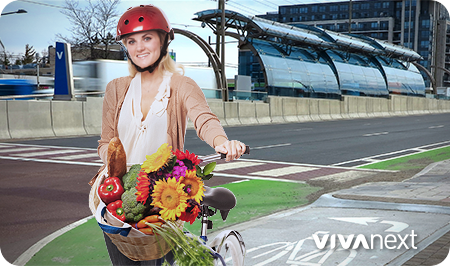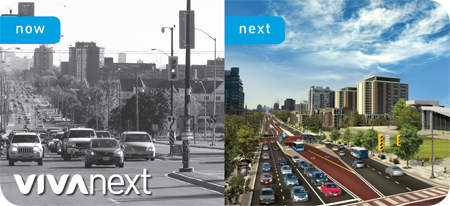Imagine everything you needed was nearby: shopping within walking distance, doctor’s office right around the corner and a park just up the street. Your work is an easy trip on transit, and there are even places on your street for dinner and entertainment. It can happen, and it’s not just in the big city.
A well-planned community combines residential, commercial and recreational uses in the same area, and this is what planners call “mixed-use.” Transit is a key part of a mixed-use community, because it gets people where they need to go without a car. It also connects us to other areas within the Region. Over time, mixed-use development naturally favours pedestrians and transit riders. This is a style of development that city planners and builders design so that people can have everything close to sidewalks and transit stations, instead of across giant parking lots or wide highways. This type of development creates a more dynamic, people-friendly style of living which had not been available in York Region’s suburban style design of the past. Providing options for living is important, from suburban to urban, because when you can find it all mixed together in one community it allows generations to transition without having to move too far.
In York Region, some of our core areas are now evolving into mixed-use communities, so we’re supporting that change by building a fast, convenient rapid transit system. As part of the Centres and Corridors initiative, York Region has a vision and best practices for new mixed-use development to make sure that is gets built in areas which are supported by higher levels of transit. Markham, Vaughan, Newmarket and Richmond Hill also have their own specific plans for key centres in each municipality. You can see the work taking place by looking for the cranes on the horizon, not a sight you would have seen here a decade ago.
As these areas evolve, buildings will be closer to the road, and closer to shops, restaurants, services, recreation, work and transit. So, it’s really nice to have everything at your doorstep if that is a lifestyle you are looking for – you can now find it being built right here in York Region.










